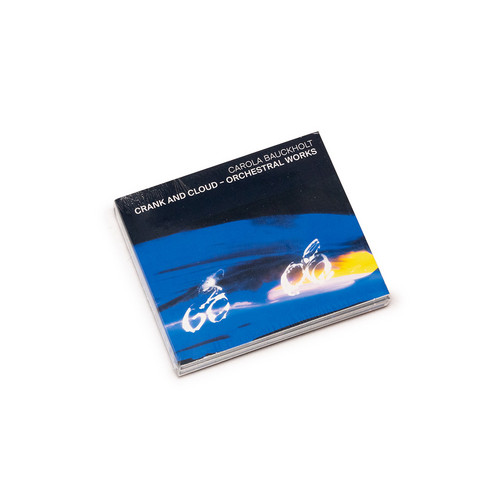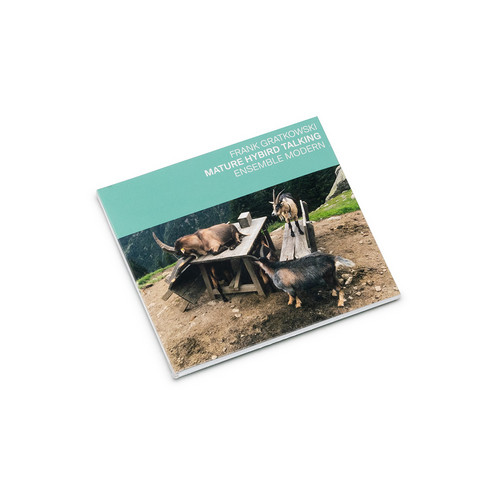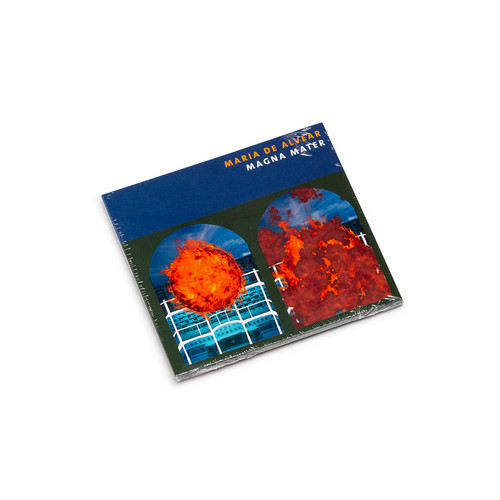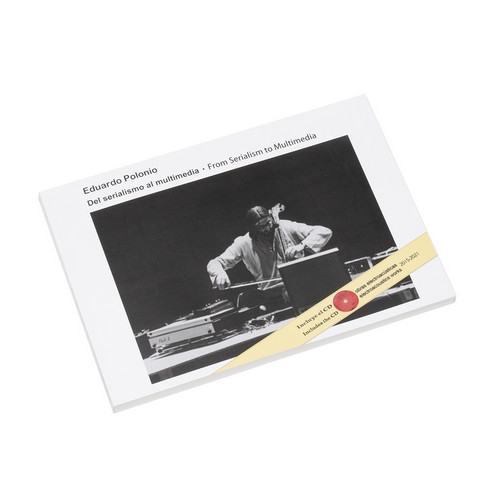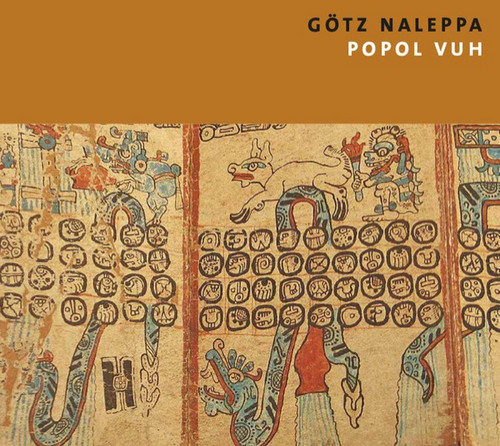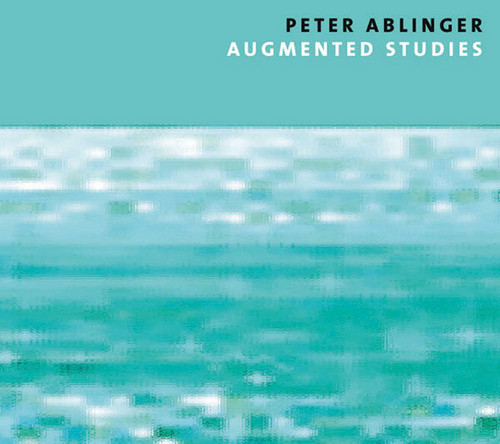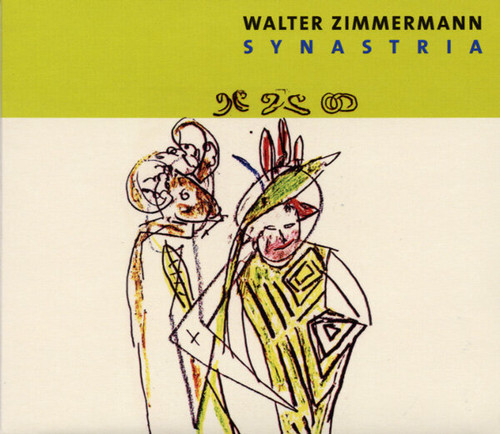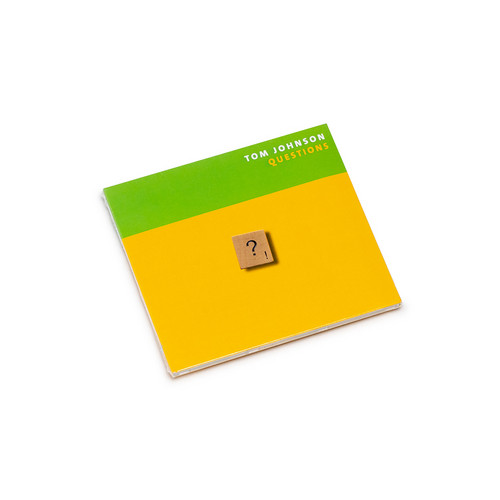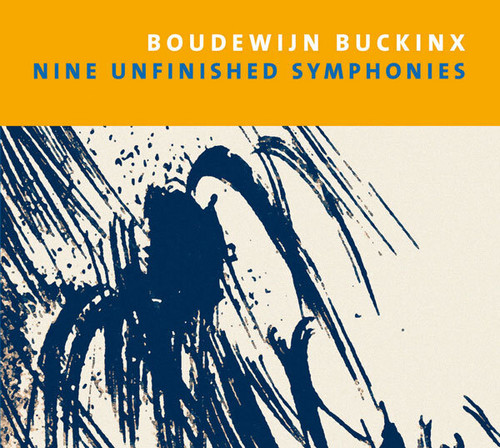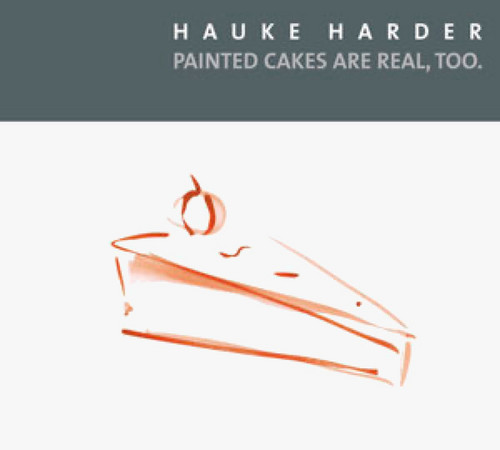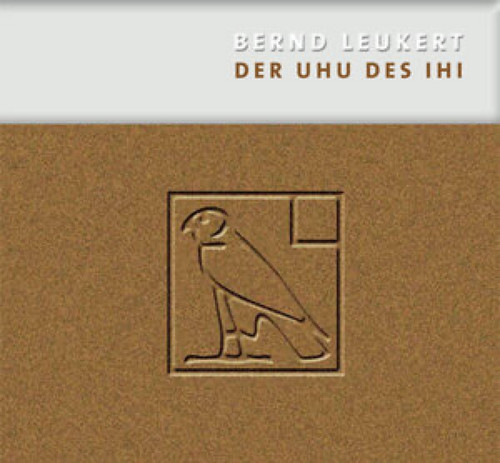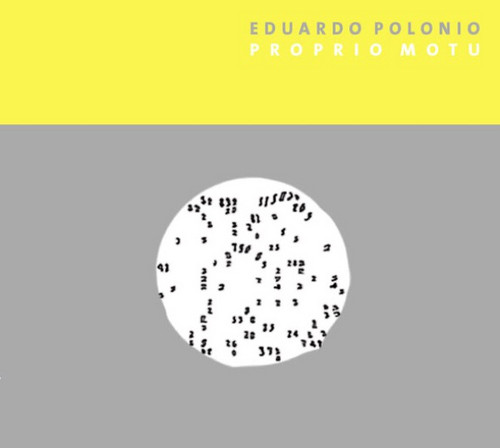★Maria de Alvear World Edition
Crank and Cloud Orchestral Works
One of Carola Bauckholt's major talents is the gift of attentive and passionate listening. Through persistent research, she uncovers the hidden musical potential of ambient sounds such as the gurgling of a fountain, a grinding crank, birds, dogs, construction machinery or a babbling baby, which then become the core of entire works. These sounds need a mediator like Bauckholt who translates them, thinks them through musically, and places them into often surprising contexts. This album features th…
Mature Hybird Talking
On Mature Hybird Talking Frank Gratkowski, one of the world’s most advanced and original voices in the field of improvised music, teams up for the first time with one of the leading ensembles for composed contemporary music. He dedicates this 45-minute piece to James Joyce and Iannis Xenakis, who both had a major impact on him. Inspired by the rhythm and sound of Joyce's language, Gratkowski and the Ensemble Modern create a widely ramified, sensitive and incredibly vital musical organism. Energy…
Chantbook for Lipparella
In intensive collaboration with the Swedish ensemble Lipparella, which specializes in creating contemporary repertoire for baroque instruments and countertenor, these 10 timeless contemporary songs were created.
Peter Söderberg, the founder of Lipparella tells: "After having met by chance at the Ultraschall Festival in Berlin in 2019, Walter Zimmermann and I started discussing whether it would be possible to perform some of his music by Lipparella. After suggesting some already existing works, w…
Magna Mater
*In process of stocking* "Magna Mater for voices, ensemble and video installation (2013) is one of Maria de Alvears most important recent works. It constitutes a ritualistic invocation of all-nourishing Mother Nature. Sounds, words and images evoke her power and wisdom, the destructive power of earthquake, asteroid impact, drought and firestorm, and the life-giving elements of soil, sun, water, air, sky, clouds, rain.
In this decidedly visceral music, Maria de Alvear explores archetypal human c…
Del serialismo al Multimedia
A tribute to Eduardo Polonio for his eightieth birthday and his nearly sixty years of compositional work. Eduardo Polonio is one of the pioneers of electroacoustic music in Spain. The book, beautifully edited and profusely illustrated, shows in its 196 pages a panoramic view of his work, from the first instrumental works of the sixties, in conventional or non-conventional notation, through the chapter on composition processes, installations and multimedia actions, electroacoustic operas, discog…
Die Verwandlung des Zornes
*In process of stocking* The Zooming is implemented musically; it captures places on the globe that lie in a constantly narrowing field of view around the Kollegienkirche in Salzburg, the site of the piece's premiere. In the north and south, the latitudes represent the boundaries at 90° each, in the east and west, the longitudes at 180° each. The places where the four wind instruments play in the Kollegienkirche each lie on an imaginary line projected in the four different cardinal directions, n…
Direccional o no · El pensamiento modifica la materia sobre la que se asienta
"As far as my artistic memory goes, I have always been fascinated by the boundaries between continuity and discontinuity, between the sayable and the unsayable, between the countable and uncountable; between what can be described completely by an algorithm and what cannot; between precise writing and writing that only manages to approximate any given phenomenon; between directionality and a lack thereof, adirectionality — a conflict that, not without a certain degree of internal struggle, I woul…
Popol Vuh
"The Popol Vuh- the Book of Counsel“ of the K'iché-Maya belongs to the most important creation myths of the early advanced civilizations in the world. A Maya from the K'iché people, who had learned Spanish during the conquista, wrote down the the texts in K'iché with Latin letters between 1545 and 1555. Before that, the texts were only passed on orally. Father Francisco Ximenéz copied this book and translated it into Spanish. Then he returned the original to the K'iché people. In this way the b…
Sais.
* 2021 Stock * Sais. is a piece about cows. Cows are a topic quite familiar for a composer who lives in an Austrian mountain village at 1000 metres hight. He finds them right in front of his door. The cows that are grazing on a juicy green under a bright blue sky - so we might imagine - are one side of the trio. Within the 100 page long score we meet them in the shape of a line of overtones. Just as natural as the life of a cow on an alpine meadow is the musical material that builds SAIS. as a s…
Augmented Studies
* 2021 Stock * "When I imagine, as I sometimes do, that evolution were possible, Complexity is not its goal, but perhaps the safety net for a possible Immediacy. This opens up the possibility to exercise sufficient safeguards in an ever finer woven net of abstractions ? if not to escape directly ? to at least be able to risk a glimpse through the netting: a glimpse unfiltered through abstraction, signs, predetermined patterns, a glimpse of unaltered reality." - Peter Ablinger
Synastria
* 2021 Stock * Philosophical writings from antiquity have frequently underlaid Zimmermann’s work of recent years, particularly in relation to notions of time an ‘harmonia’ [...] Another recurrent theme in later works is that of the ‘broken unison’ (both melodic and rhythmic), which clearly has an allegorical/social dimension as well as a musical one [...] The isolated performance of single of his pieces emphasises their ‘otherness’ in relation to the main trends in new German music, whereas the …
Questions
* 2021 Stock * Most music proceeds with great self-assurance, more like an answer than like a question, but these pieces raise questions. We hope you will not only listen to the music as the pairs go by, but we will also want to decide whether they are same or different. Try it. Maybe your musical perceptions are better than you think. And if not, well, no one is going to grade you, and you can always try again! - Tom Johnson
This situation raises new questions, which Johnson undoubtedly intends…
Nine unfinished Symphonies
The Nine Unfinished Symphonies were conceived as one entity. They are written in my musical native tongue; the musical grammar and idioms with which I have become so familiar that I can converse in them spontaneously, without thinking, so that I can devote my full attention to what I actually want to do. It appears that we need narratives, such as the ‘sacred’ number nine with symphonies, or the concept of the Unfinished, which stands in sharp contrast to the fragmentary or the ‘uncapitalized’ u…
Pathological Curves
To sonically modify sound, not as a composerly or listenerly injunction but as a condition of its possibility: such is the task of Elizabeth Hoffman. Hers is not merely a music of the "verb" - that composers "do" something or "perform" something on the sonic. Hers is an "adverbial" music.
Above all, adverbial music modifies - sound, yes, but more fundamentally the space in which sound appears and the temporality that it solicits as it vanishes, always. Adverbial music, reticently and generously,…
Wave Piano Scenery Player
Wave Piano Scenery Player consists of several artifacts brought into a single structure: large black oil paintings on paper sheets dividing an automatic grand piano in two parts (sounding body, keyboard); tree pieces of music hamonically linking the 88 keys of the piano by combining them with mirotonally tuned sinewaves; a subwoofer/loudspeaker reproducing the elctronic tones; a pianist and a computer, both acting as performers.
The time-based form is deivides into threee parts, in which Sabat c…
Painted Cakes Are Real, Too
When you are listening to his pieces and are completely at ease, they offer the listener the beauty of pure sound: I believe this also applies to his likeminded friends. Even when and if they are of a continuous narrative type, they just create the right situation to listen to sounds. As the title reveals: Painted cakes are real, too. The beautiful sounds are repeated in order to remain purely sound. This repetition does not build up a narrative, it becomes more complicated and excited not in or…
Ballad
The word "ballad" implies a tale or narrative, and while there is no literal story being told there, I found myself thinking of the two performers as co-travellers in a terrain - or as dance partners - and the music as sometimes like a song they sing together, sometimes a landscape they cross, sometimes a mood, sometimes a monologue, and sometimes a fine line they trace. In the end, it is a ballad about the cello and the piano, and the way I hear them together. - Linda Catlin Smith
Der Uhu des Ihi
"Leukert brings back intuition into the computer-mechanical techniques of contemporary classical music. His compositions derive from the hearing experience - he has become a David Lynch for the ‘cinema pour l’oreille’, who is operating with the ironically associative scepticism of Godard. A blessing that Maria De Alvear’s small label ‘World Edition’ now produced eight of Leukert’s audio pieces on CD; among them the enchanting trilogy Wildwechsel" . - Alban Nikolai Herbst
Improvisation
That’s the name of the game... Marco Blaauw plays on a quartertone double bell trumpet, a shell, brought from Madagascar,a slide trumpet, piccolo trumpet, quartertone flugel horneven megaphone and flexible tube. Gijsbrecht Royé plays on a self-made bass-zither. To play on the four groups of bass grandpiano strings, he uses different kinds of sticks; two bows (normally used for double bass), metal strings, nails, brushes, knives, rat-tailed files and metal scouring pads.
Proprio Motu
* 2021 Stock * The disc summarises a major part of Eduardo Polonio’s work over the last decade and in some way is a complement to his 1969 - 1998 anthology.
There is a deep line, indecipherable for me, that runs through the work of Eduardo Polonio. It is a spectral base that we can track to his early works. ... In his latest work, Sudoku-mix, he buries it even deeper. We should not opt for the easy programmatic interpretation of the phenomena he points to in his work. The harmonic plays and even…
